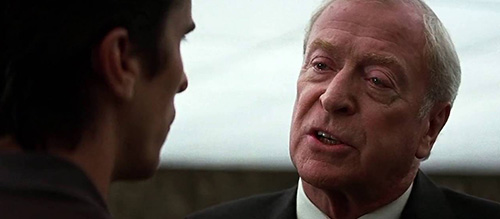10 Best The Dark Knight Moments
The Dark Knight is still widely believed to be among the very best superhero movies of all time. Released in 2008, Christopher Nolan’s dark vision of the Batman (played by Christian Bale) rewrote the rules of comic book adaptations and went a long way to establishing deeper and more serious superhero cinema as a viable alternative to the fluffy fare that had dominated much of the genre’s existence ahead of this Warner Bros release.
This adaptation, still the most famous film adaptation of the iconic DC Comics character, is of course headlined by the outstanding Oscar-winning performance of Heath Ledger as the Joker. Ledger, who was just 27 at the time of filming, dominated Nolan’s feature with a starring turn that is still regarded as the very best in the genre’s history, his untimely passing at the age of 28 only cementing the legend surrounding his masterful portrayal.
In The Dark Knight, Ledger’s Joker challenges Bruce Wayne’s beliefs at their very core, Batman’s mirror image and eternal foe causing the superhero an ideological crisis through an unrelenting and unpredictable assault on not only the Batman, but on Gotham and the systems that hold together much of modern society’s moral standards and beliefs too; Joker being a physical manifestation of chaos in an ordered world.
In this Movie List, we at The Film Magazine will be looking at each of the confrontations between Joker and Batman, and will be comparing them to the other iconic moments Christopher Nolan and his ensemble of star names created, to judge the very best moments from The Dark Knight. Whether they be memorable and iconic scenes, important moments of characterisation or unforgettable quotes, these are the 10 Best The Dark Knight Moments.
Read 10 Best Batman Begins Moments before you read this article.
Follow @thefilmagazine on Twitter.
10. Alfred’s Parable

“Some men just wanna watch the world burn.”
Wise old Alfred had always been a doddery old man in Batman screen media, but in Nolan’s Dark Knight Trilogy he held a rough-around-the-edges cockney accent, as well as all of the naturally occurring Michael Caine-isms that came with casting an actor of Caine’s calibre in the role; Caine’s natural charisma and history of work playing playboys, hard men, and menaces, offering depth to a character way less present than his impact suggests.
In The Dark Knight he tells a short tale of how he and a task team tracked a thief in Burma who’d stolen precious gems. At this moment in the film Joker is running rampant, he’s seemingly without cause, and Bruce Wayne (being a relatively young man) is sticking to his guns that everyone wants something, that all Wayne has to do is work out what that is. This is when Alfred becomes more than a butler, more than a surrogate father, he becomes a mentor; a vital cog in the Batman machine made for more than simply bringing Bruce morning smoothies and ordering parts.
It’s a one minute scene delivered in stunning monologue by an all-time great screen presence; a piece of writing that explains simply the maniacal methods of the antagonist whilst serving the protagonist with an invaluable lesson that shall shape his ideology moving forward. Alfred, when Bruce needed his advice most, reminded the billionaire from a well-to-do background that not everyone pursues things that are “logical, like money”, that some people “can’t be bought, bullied, reasoned or negotiated with”, that Joker is in essence the counter argument to all that upholds our modern society and that Wayne, as Batman, must be willing to evolve and change in order to combat him.
9. The Assassination Attempt

After so many great Joker moments, seeing the actor underneath the face paint felt like something of a treat once it came in The Dark Knight’s assassination attempt scene. Such was Nolan’s intent for the character, it was only a brief glimpse, but as is often the case with the best moments in this director’s films, it came in the midst of an important story beat that enhanced characterisation and accelerated the pace of the narrative.
With Bruce Wayne following breadcrumbs in an attempt to uncover the whereabouts of Joker, an apparent threat to the safety of government officials at Commissioner Loeb’s state funeral, the noise of the public parade sinking into a silence as the mayor gives a speech, Nolan masterfully cuts between the main players at an increasing pace, the score roaring back into view as the information Wayne is pursuing comes to reveal itself. With the piercing thuds of the funeral’s gun salute comes gunfire towards our hero from secret service men stationed on rooftops and the reveal that the team performing the gun salute is actually Joker and his “goons” preparing to fire on the mayor. It’s a scene that masters the art of tension in such a context, bringing together any number of elements to best tell the circumstances of the scene but perhaps more impressively tell of Wayne’s centrality to so many important figures within Gotham City and how many people rely on the Batman to keep them safe.
This, of course, acts as a moment of herodom for James Gordon too, who “sacrifices” himself here to save Mayor Garcia, faking his death and going into hiding until he can capture the Joker himself. This crescendo to one of The Dark Knight’s many important high points of tension is a microcosm of this film’s most underrated quality, its pacing; a superb piece of filmmaking that served to better Nolan’s reputation but more importantly an already terrifically strong story.
Recommended for you: Live-Action Batmen Ranked

